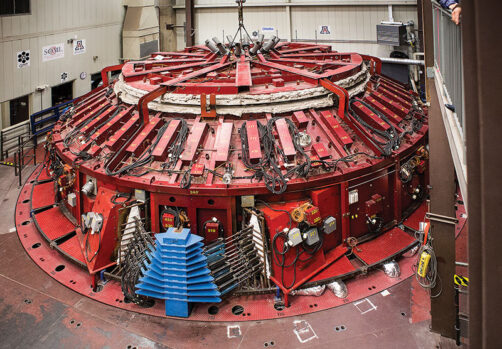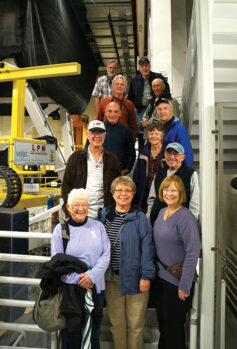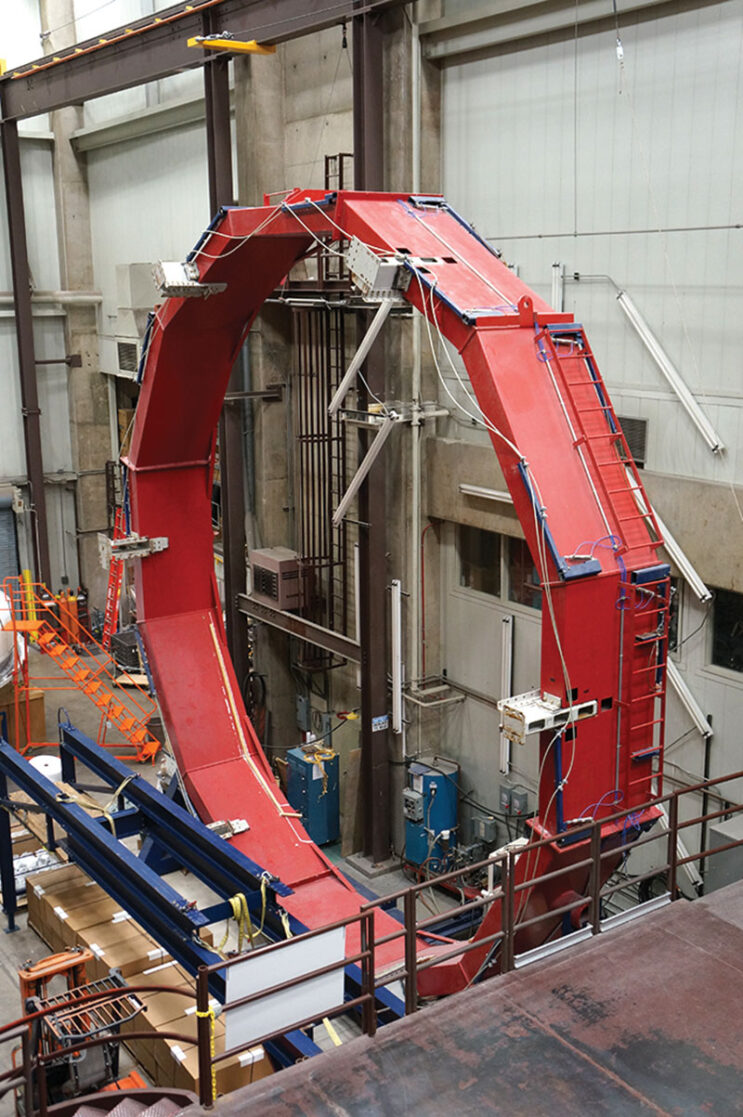Robert Thoresen
Officially named The Steward Observatory Mirror Lab sits beneath the east side of the Arizona Stadium. Fortunately club members had an indoor industrial photo shoot on an extremely rainy day. Members were able to get a personalized tour while a group of University of Oregon football fans were sent off in a different direction which paralleled their football team’s direction the following day.
The lab dates back to 1980 when it was first housed in a vacant synagogue and then moved to its present home in 1985. The facility has been making large glass mirrors including the large Binocular Double and Smithsonian Survey Telescopes on Mt. Graham and mirrors for the Kitts Peak, Arizona, and Apache Point, New Mexico, since the installation of the electric fired rotating furnace in 1990. The current big project is creating eight parabolic mirrors that will be placed within the Giant Magellan Telescope in Chile. That will keep the facility humming until 2022. Two mirrors have been completed.
Sand for the glass is obtained from the southwest coast of Florida, transported to Japan for processing and purifying and then sent to Tucson for firing and forming. A dense ceramic honeycomb system is filled up with small chucks of glass and heated initially to 700 degrees centigrade and then increased to 1,100 degrees centigrade in the cylinder furnace dropped from the ceiling. Once cooled, the glass cylinder is moved to a milling room where less than five percent of the glass is removed to form the comparatively light weight 27 foot diameter parabolic mirror. This process took about ten years to create the first two mirrors. With lessons learned, the other six mirrors will take about nine years to finish. No explanation of the transport from Tucson to Chile was given, but it probably won’t be provided by U-Haul.
Football season home games cut down the process. Vibrations from even a placid crowd create too much vibration for the heating and milling process. The following day Oregon vs. Arizona game crowd was reportedly measured on the Richter Scale on Mount Mauna Loa.
The tour docents were very informed and their initial one hour presentation is given in a seminar room. The formal guided tour of the facility is another 45 minutes; reservations are required.
Like all Quail Creek residents food was on all club members’ minds. The Arizona Inn was preselected as the dining venue. The service was excellent and the lunch menu had a wide selection of sandwiches and salads. The house wine was unspectacular and overpriced.
The Photo Club of Quail Creek, PCQC, was formed in 2009 and holds regularly scheduled monthly meetings. A core activity is prescheduled photo field trips throughout the year. Guests are invited to monthly meetings.



